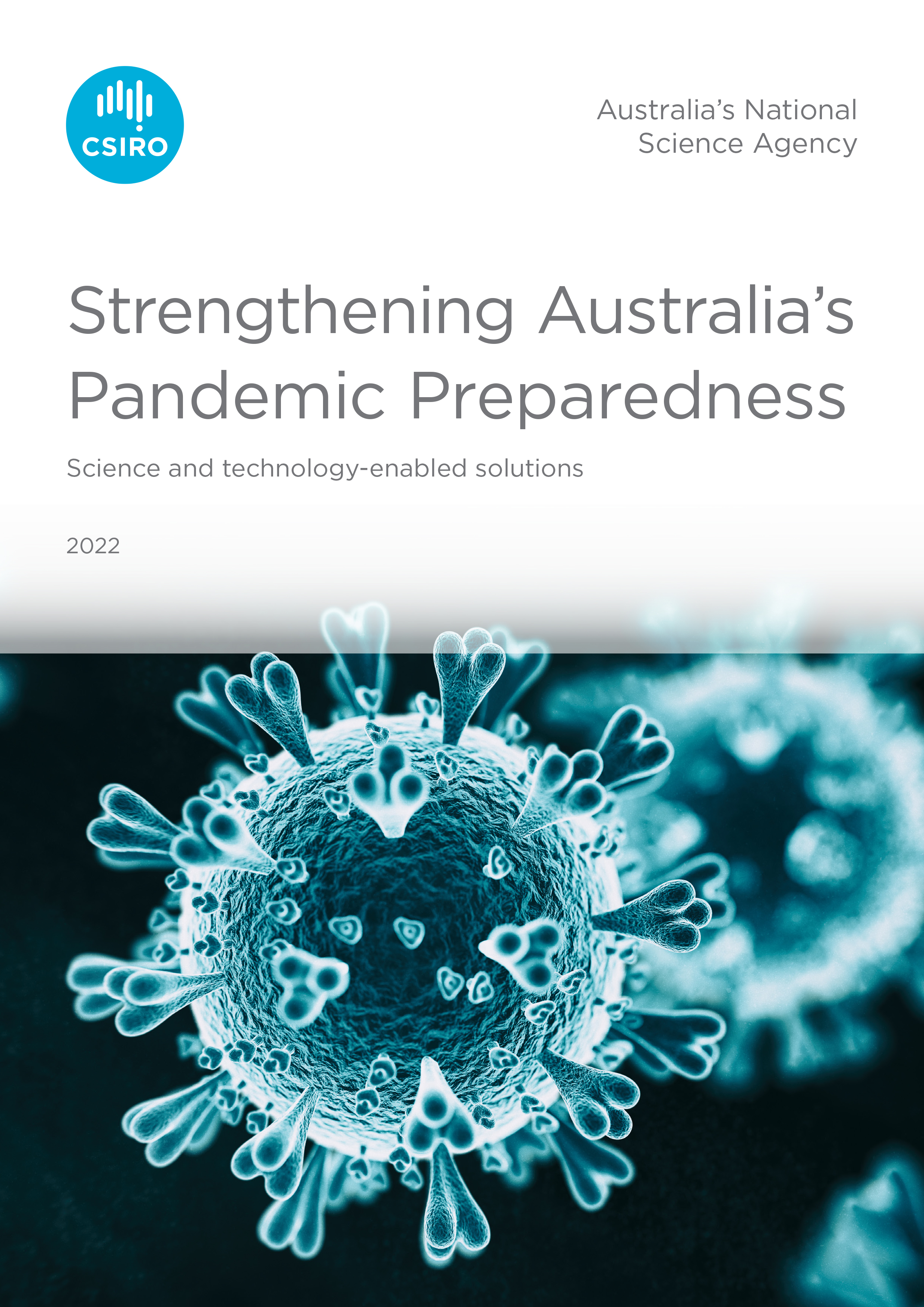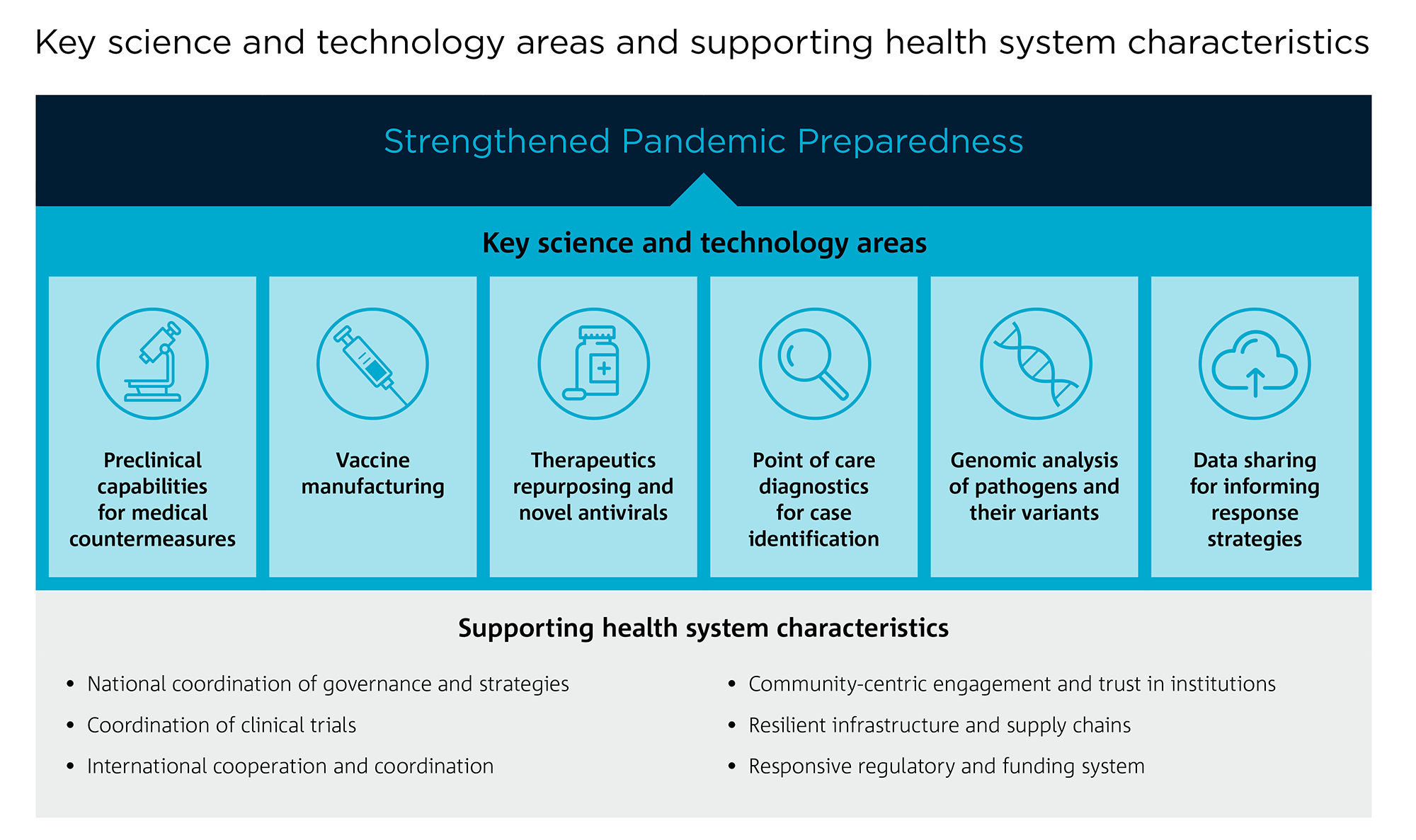Minimising the impacts of pandemics through science and technology
The COVID-19 pandemic was unprecedented for many governments around the world, with highly disruptive and costly impacts. With more pandemics a  likely scenario, it has highlighted the need for improved national planning to help better prepare for future outbreaks.
likely scenario, it has highlighted the need for improved national planning to help better prepare for future outbreaks.
Targeted investments and planning in science and technology solutions can play a key role in helping Australia become more prepared for future pandemics. These range from improved research of key viral families, developing early warning systems through enhanced genomics expertise, to expanding onshore vaccine manufacturing capabilities
The Strengthening Australia's Pandemic Preparedness report examined the six top science and technology areas with 20 recommendations to inform government and industry planning.
- Executive summary
- Executive summary
- Strengthening Australia's Pandemic Preparedness
- Strengthening Australia's Pandemic Preparedness
The report was developed as part of CSIRO's Infectious Disease Resilience Mission and was based on consultations with 146 experts from 66 organisations across government, industry and the research sector.
Coordinating Australia's preparedness and response
While Australia had strong success early in the pandemic keeping infections low with lockdowns, border closures and quarantine these strategies come with high social, health and economic costs.
By complementing these approaches with the science and technology enabled solutions identified in the report, Australia can reduce costs and impact while also improving our ability to defend against future disease outbreaks. Key to this is a transition away from crisis response and a move towards an integrated cycle of prevention, detection, response and recovery.
Key science and technology areas for strengthened pandemic preparedness
The report identified six science and technology areas that would have the most impact to Australia's pandemic preparedness.
In order to maximise their effectiveness, many of these are complimentary and do not operate in isolation. By investing in each of these areas now, Australia will be well placed to prepare for future pandemics.

Minimising the impacts of pandemics through science and technology
The COVID-19 pandemic was unprecedented for many governments around the world, with highly disruptive and costly impacts. With more pandemics a likely scenario, it has highlighted the need for improved national planning to help better prepare for future outbreaks.
Targeted investments and planning in science and technology solutions can play a key role in helping Australia become more prepared for future pandemics. These range from improved research of key viral families, developing early warning systems through enhanced genomics expertise, to expanding onshore vaccine manufacturing capabilities
The Strengthening Australia's Pandemic Preparedness report examined the six top science and technology areas with 20 recommendations to inform government and industry planning.
- Executive summary PDF (572 KB)
- Executive summary TXT (15 KB)
- Strengthening Australia's Pandemic Preparedness PDF (2 MB)
- Strengthening Australia's Pandemic Preparedness TXT (190 KB)
The report was developed as part of CSIRO's Infectious Disease Resilience Mission and was based on consultations with 146 experts from 66 organisations across government, industry and the research sector.
Coordinating Australia's preparedness and response
While Australia had strong success early in the pandemic keeping infections low with lockdowns, border closures and quarantine these strategies come with high social, health and economic costs.
By complementing these approaches with the science and technology enabled solutions identified in the report, Australia can reduce costs and impact while also improving our ability to defend against future disease outbreaks. Key to this is a transition away from crisis response and a move towards an integrated cycle of prevention, detection, response and recovery.
Key science and technology areas for strengthened pandemic preparedness
The report identified six science and technology areas that would have the most impact to Australia's pandemic preparedness.
In order to maximise their effectiveness, many of these are complimentary and do not operate in isolation. By investing in each of these areas now, Australia will be well placed to prepare for future pandemics.
Strengthened Pandemic Preparedness
Key science and technology areas
Supporting health system characteristics
